When Denver’s sunset arrives at 4:35pm on Dec. 1, sun-loving Coloradans may find themselves bemoaning the dark and cold that befalls them for 14 and a half hours a day as winter officially approaches. They might want to adopt the Scandinavian concept of hygge.
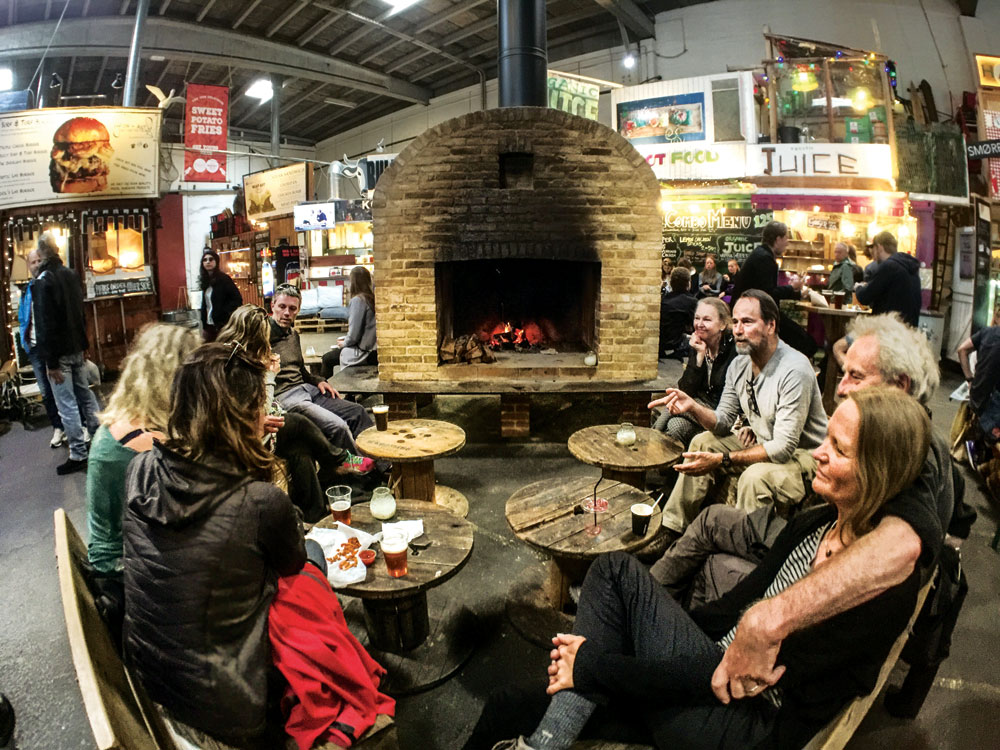
One aspect of hygge could be described as the positive feelings we have when we spend time with people we care about. This setting at a popular street food market in Copenhagen would be considered hygge-like.
Hygge (pronounced hoo-gah, hue-gah or hee-gah depending on whom you talk to) is a fundamental aspect of Scandinavian culture that has no direct English translation—but its approximate meaning is “a concept that evokes coziness.” A growing topic on lifestyle blogs and sites like Pinterest, the practice of hygge means cultivating and enjoying the small moments in life, creating a sense of contentment, inspiration and appreciation. A hygge lifestyle represents an alternative to fast-paced American culture, incorporating more of this Scandinavian custom into our own lives and the lives of loved ones.
Hygge Final from Steve Larson on Vimeo.
Shortly after hearing the word hygge for the first time this past spring, we had the opportunity to stay with a family in Norway and visit Copenhagen, Denmark. Attempts to explain hygge are said to be about 80% of the word’s real meaning. Our trip offered the opportunity to learn about the other twenty percent.
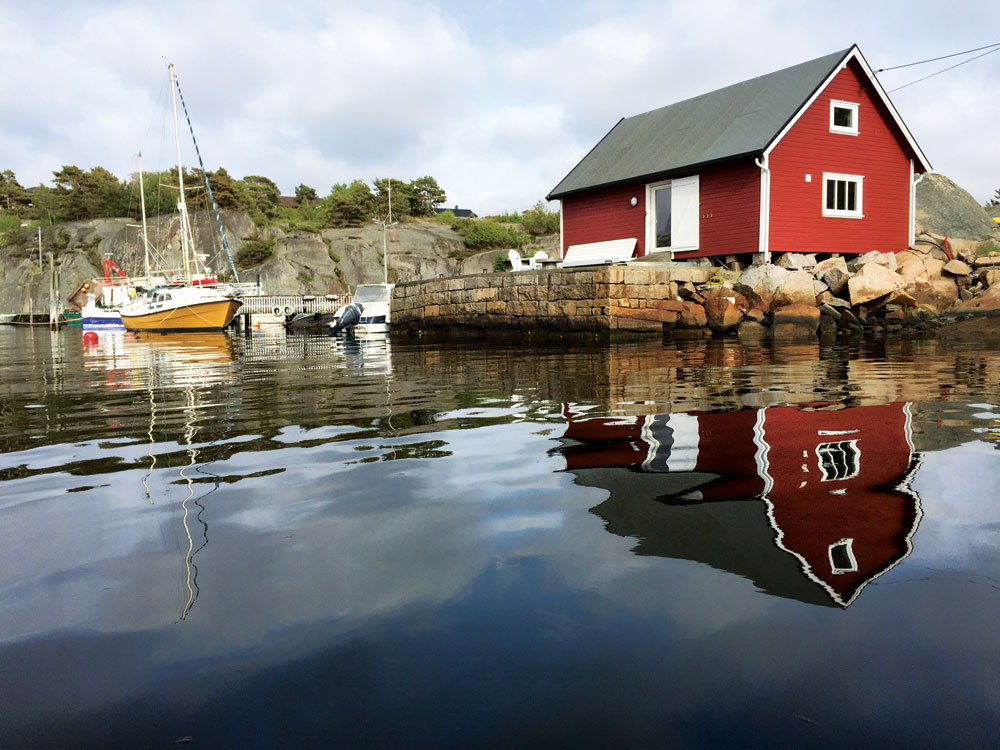
In Norway it is common for families (not just wealthy people) to have a cabin, often passed on for generations, where they get away on weekends and holidays for hygge time—enjoying simple pleasures and spending time with loved ones. Holidays are more frequent than in the U.S.
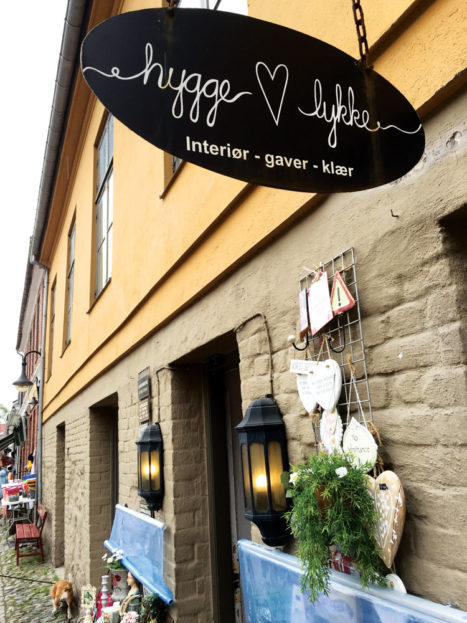
As is now happening in the U.S., businesses in Norway and Denmark use hygge in their names to create an association with positive feelings, as seen on this gift shop sign.
When we first asked about hygge, we sensed, not an unwillingness to talk, but, a slight pause that seemed to mean, “It’s such a well-known part of everyone’s life that no one feels a need to define it.” Our guide in Copenhagen said, “It’s sort of bred into you at a very early age. Everyone knows what it is to be hygge. With the Danes, they don’t think about it too much. It just occurs.” Ivar, a late 20s young man in our host family said it this way, “Norwegians feel it’s almost like a human right to have hygge.”
Between conversations on our trip, books, magazine articles and online comments, we have pieced together some of the hard-to-define aspects of what hygge is to the Scandinavians.
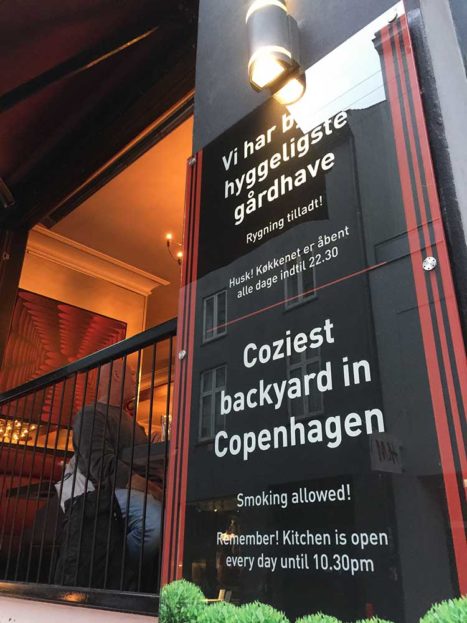
A bar called itself the hyggeligste (coziest) backyard in Copenhagen. There, of, course, everyone understands what the word means—the translation is for tourists.
Translating hygge as coziness implies a kind of physical comfort—but hygge is more about good feelings in interactions with others. It is an attitude of mindfulness and being present in the moment. It is a way of being with other people. It’s appreciating the simple things in life. A Scandinavian commented online, “American life is so rushed. You have to slow down for it. Hygge is not something you can do in a rush.” Another said, “You can’t just go out with your high salary and buy hygge like a package that you can install. You need to spend time on it.”
Norway and Denmark are consistently at the top of a survey called the World Happiness Report (the U.S. placed 14th this year)—and hygge seems to be an essential component of the happiness formula that keeps them there.
But understanding hygge requires some understanding of Scandinavian culture—where wellbeing, work-life balance and egalitarianism are promoted by the government. “You’d struggle to find a Norwegian who wants to work more than the 40-hour week,” commented Ivar. In Denmark, the official work week is 37 hours long. That leaves 16.3 non-work hours in the day for work-life balance. And other factors also contribute to a culture where hygge can thrive. When Danish workers get laid off or chose to change jobs, the government provides unemployment and training for a new job. The government also provides health care and higher education.
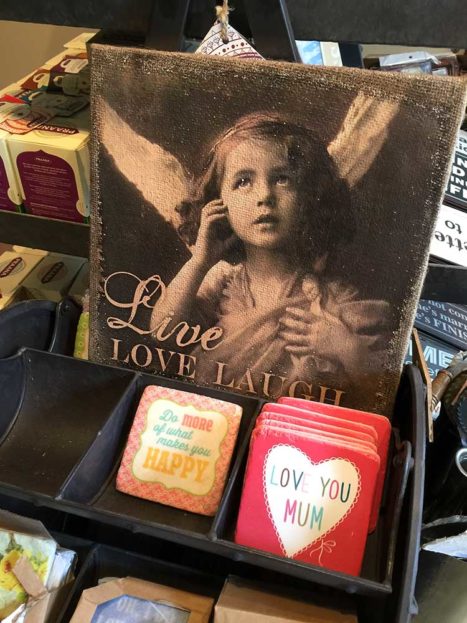
Items in a gift shop in Norway express hygge-like messages. The old photo gets at the idea that hygge is not really something you can buy, but is embedded in family values over generations.
In the book Living Danishly (which is both informational and humorous), the British author Helen Russell does a one-on-one happiness survey of the people she meets while living in Denmark. The people she asks turn out to be 8s, 9s and 10s on a scale of 10. She learns that with higher taxes to pay for the government benefits, Danes have discovered that after their basic needs are met, more money doesn’t lead to more happiness. They focus on what gives them a better quality of life. A trash collector explains that he’s happy to work five hours a day, keep in touch with the lives of those on his route, and coach a soccer team after work.
Some Americans are finding hygge-like time in our rushed culture, but the Scandinavian meaning of the word seems to require a compatible culture for it to thrive in the way it exists there.
Hygge in the U.S.
Hygge is starting to show up in the marketing of U.S. businesses, associating the concept of hygge with goods and services that range from health and wellness to clothing and décor. Two such businesses in Stapleton are just getting off the ground.

“Posh Porch,” a Hygge-inspired pop-up shopping experience, was started by Amanda Meyer (back left) who was introduced to Hygge while living in Sweden and Denmark. Also pictured are Rosemary Jackson and Craig Jackson (back row) and Olivia Meyer, Madelyn Jackson and Vivian Meyer (front row).
For Amanda Meyer, the idea for Hygge Cashmere came from living in Sweden and working in Denmark, where she gained a firsthand understanding of hygge. “As part of surviving the long Scandinavian winters, I became drawn in by flickering candles and a sense of coziness,” she explains. The simple, streamlined aspects of hygge seemed a natural fit for a neighborhood business concept. Meyer says “marketplace shopping” has reintroduced consumers to the “butcher, baker, candlestick maker” experience with shops and vendors offering small batch merchandise and personalized service.
Meyer began Hygge Cashmere by re-styling and giving new life to cashmere sweaters and selling them at a reasonable price point. “Cashmere is known for its soft comfort,” says Meyer. “It’s completely hygge.” When considering a marketing strategy, Meyer realized her front porch, near the Stanley Marketplace, draws regular travel by pedestrians, cyclists and cars. She collaborated with other vendors who embrace the hygge concept and began Posh Porch, a pop-up shopping experience open several times a year to sell handmade clothing, furniture, kitchen items and gifts. Her plan is to continue to grow and eventually open a brick-and-mortar location.
A Posh Porch holiday event will be held at 9198 E. 25th Drive on Dec. 9 and 10 from 11am–4pm. For information, email amandapacker@yahoo.com or call 303.717.8763.

Tara Duncan and Miki Tynan will open Hygge Birth and Baby in Stapleton in 2018. As certified doulas, they share a passion for helping women experience an empowering and tranquil birth experience surrounded by a “tribe” of family and friends.
The inspiration for another new local business, Hygge Birth and Baby, also came, in part, from the concept of hygge. Stapleton residents Miki Tynan and Tara Duncan, as certified doulas, share a passion for helping women avoid an unpleasant birth experience. “That’s where hygge came in,” says Duncan. “Hygge Birth and Baby is a place and state of mind that empowers women to deliver their baby in an intimate, cozy atmosphere where they feel most comfortable.” Doulas provide continuous physical, emotional and informational support to a mother before, during and shortly after childbirth.
Duncan and Tynan will open the Hygge Birth and Baby birthing center in Stapleton in mid 2018. They envision a tranquil, hygge birth environment incorporating earthy, natural elements. “Our emphasis at the birthing center will be on a sense of community,” explains Duncan. “A woman can be surrounded by her ‘tribe’ consisting of her doulas, family and friends to help enhance her birth experience.” The center will also offer home birth services attended by hygge-certified doulas. A partnership with the University of Colorado Hospital will provide access to the facility and its physicians and nurses should the need arise. For more information about Hygge Birth and Baby, visit: https://hyggebirthandbabydenver.com/



0 Comments